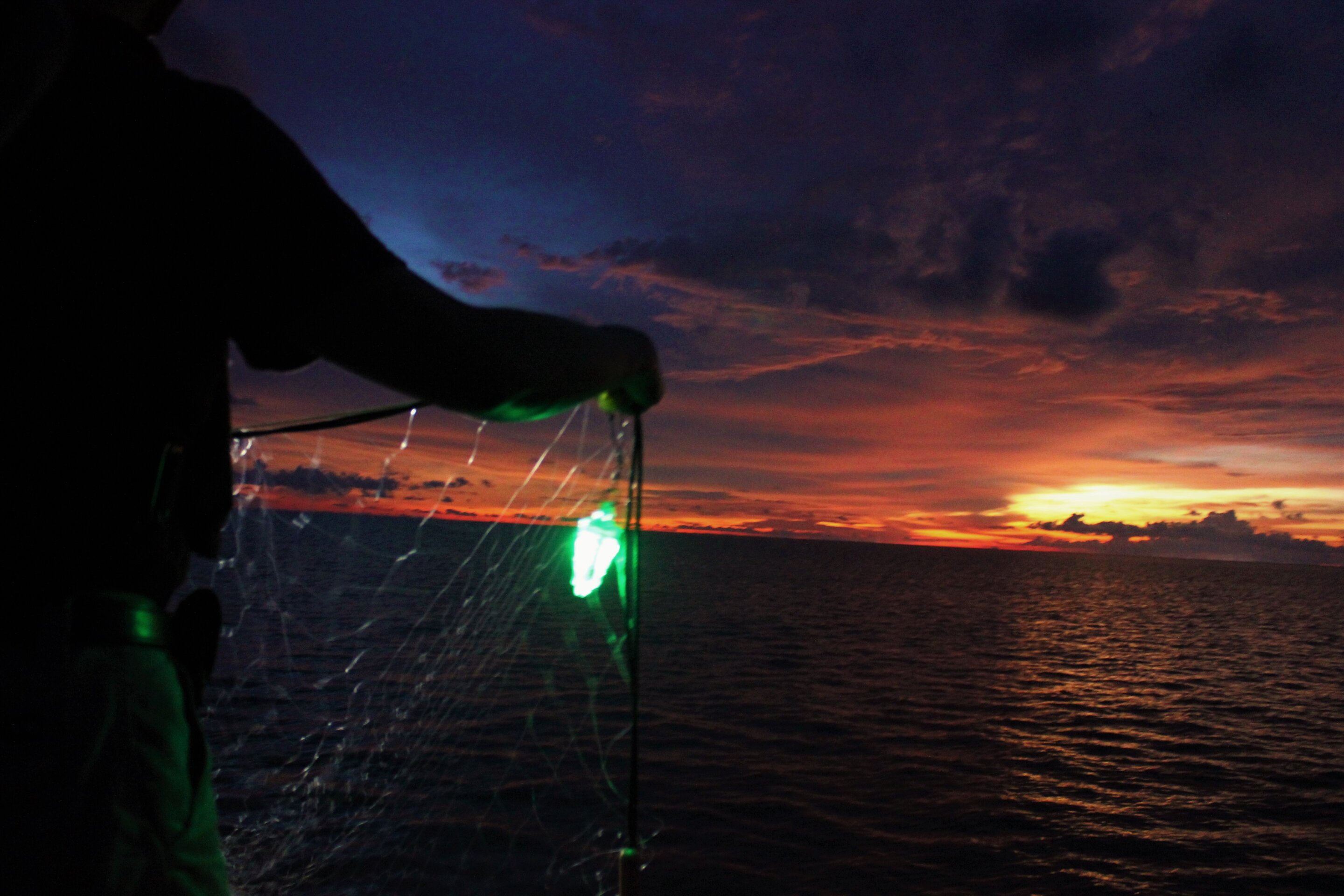
A new study shows that using lighted nets greatly reduces accidental bycatch of sharks, rays, sea turtles, and unwanted finfish. The credit is given to the National Oceanographic and Atmospheric Administration.
Researchers found that using lighted nets greatly reduced accidental bycatch of sharks, rays, sea turtles, and unwanted finfish.
The researchers found that lighted gillnets reduced total bycatch by 63 percent, which included a 95 percent reduction in sharks, skates, and rays, an 81 percent reduction in Humboldt squid, and a 48 percent reduction in unwanted finfish.
The authors of the study are Jesse Senko, assistant research professor at Arizona State University, and Daniel Aguilar-Ramirez and John Wang.
Gillnets are one of the most extensively used fishing gear in coastal regions throughout the world's oceans, but often catch other animals not targeted by fishers. Other fish species as well as non-marketable juvenile target fish species are also included. These animals are often dead. The capture of non-target species in coastal gillnets has contributed to declines in some species and has impacted the coastal environment.
Over the past decade, illuminating gillnets with lights has become an effective tool to reduce bycatch of sea turtles. The effects of net illumination on other vulnerable species, total fisheries bycatch, and efficiency of fishery operations have never been examined.
The researchers were surprised to find that the lighted nets almost eliminated bycatch of sharks, skates, and rays, an ancient group of animals that has declined globally due to bycatch.
The illuminated nets reduced the time it took fishers to retrieve and disentangle the nets by 57 percent, making this technology attractive for fishers looking to increase their efficiency independently of any concern for bycatch. Fishers needed to remove fewer animals from the illuminated nets, which included turtles, sharks, skates, rays, squid, and small finfish, which can be time consuming, difficult, and even dangerous to remove from nets. fishers can save more than an hour per trip when fishing with illuminated nets, which can help improve the quality of their catch.
Jesse Senko of Arizona State University is the lead author of the study and he said that the results show the potential benefits of illuminated nets beyond sea turtles.
Gillnets are ubiquitous because they are inexpensive and catch everything that passes them, according to a co-author of the study. The work provides a practical solution to increasing gillnets' selectivity and avoiding their bycatch. This lighting should be incorporated into gillnet materials so that fishers will find it easy to use.
Reducing the amount of time untangling bycatch is equally important as reducing the bycatch in nets, according to John Wang, a co-author on the study. fishers need to know that there are benefits for them. This is important for the adoption of technologies by the fishing industry.
Many costal nations are working with the WCS to reduce the bycatch of dolphins, sharks and rays. There are limited technical solutions that would reduce that bycatch while allowing continued catches of the species the fishers set out to catch, and often those catches have key livelihood and food security implications. This work could be used to protect threatened megafauna in their final strongholds around the world.
Net illumination reduces bycatch, maintains catch value, and increases operational efficiency according to Jesse F. Senko et al. The journal is titled " 10.1016/j.cub.2021.12.050".
Current Biology is a journal.
Lighted nets dramatically reduce bycatch of sharks and other wildlife while making fishing more efficient.
The document is copyrighted. Any fair dealing for the purpose of private study or research cannot be reproduced without written permission. The information provided is for educational purposes.